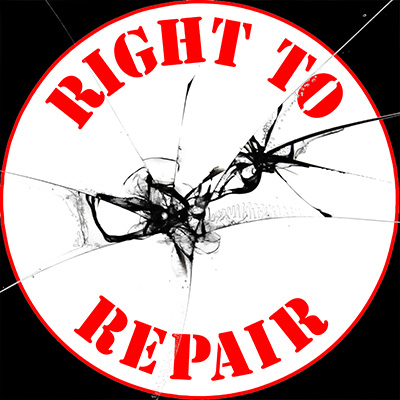
Right to Repair has grown from a simple philosophy to a legitimate movement, with numerous states legislating measures to boost the rights of the consumers and businesses who ultimately pay for and use different pieces of technology every day. Let’s take a few moments to evaluate where the movement stands currently, as well as review what the right to repair would mean for businesses.
Let’s begin with why the right to repair is so important, and what obstacles it currently faces.
Right-to-Repair Has Two Goals
Goal 1: Protect the Consumer
According to the Public Interest Research Group, a nonprofit that supports initiatives to benefit society, limited repairability is primarily intended to boost service contracts and the profits that manufacturers make from them. In short, these manufacturers can inflate the money they make through service contracts by limiting what a consumer can do to repair their technology themselves or through a third party. By utilizing specialized parts like proprietary screws and tools used to apply them, software limitations, warranty violations, and restricting access to repair manuals, manufacturers are able to ensure that their products can only be serviced by them (provided they offer these services at all).
Effectively, by restricting the consumer’s ability to fix their own technology, manufacturers are promoting the idea that technology needs to be replaced. Naturally, this helps bring in more profits for them, both through service contracts and consistent hardware sales.
This covers the gamut of business technology, from the computers found in the office to medical equipment, HVAC systems, and even agricultural equipment, all are susceptible to these artificial limitations.
Goal 2: Protect the Planet
Let’s not split hairs here: the practice of replacing technology every time something breaks is an environmental disaster. The vast majority of technology is simply thrown out and dumped in landfills, rather than being properly recycled. Not only is this wasteful, many of the devices we use have materials in them that are harmful to the environment and our communities. The ceaseless production of new hardware to replace these devices—again, many of which are only made obsolete by the software locks that manufacturers put in place—also contributes to the problem, as the manufacturing process of new components consumes valuable resources that simply don’t need to be spent.
In 2019 alone, 53.6 million tons of electronics were disposed of, leading to the loss of $57 billion in assorted materials like copper, gold, platinum, and silver. Furthermore, a lot of the materials used to manufacture computing components are also hazardous to human health. For example, mercury is used in everything from monitors, PCBs, and smart bulbs, and can damage the human nervous system.
Clearly, e-waste is a significant problem, and is only getting bigger. Back in 2020, the United Nations released a study that showed e-waste was increasing by 21% each year. While being able to fix computers and other electronic hardware more easily won’t eliminate this issue, it would certainly help to reduce it substantially.
Where Does Right-to-Repair Stand Currently?
Unsurprisingly, the philosophy that you should be able to easily fix your own belongings has gained popularity…and more importantly, momentum in terms of legislative action in the United States and Europe alike.
Back in 2022, New York became the first of the United States to codify a Right to Repair law that requires manufacturers to provide the tools and information needed for consumers to complete repair work, with other states following suit. In September of this year, California passed the most comprehensive piece of legislation in the nation, requiring manufacturers to provide everything needed to facilitate repairs and banning digital locks.
Across the pond, the EU proposed a law in March that would require manufacturers to not only provide access to tools and materials, but make parts available for a decade after. At the time this is being written, the law is still being negotiated, but it is projected to pass in 2024.
These Laws are Being Contested
Naturally, lobbyists are and have been working to prevent these laws, or at least limit their influence. Many of the aforementioned state laws have exemptions written into them that specifically exclude enterprise computing devices. A few months ago, the automotive industry—famous for small, independently owned shops and DIY repairs—announced an agreement that seemed to commit to providing small shops with the tools and resources necessary to repair vehicles and their increasingly computerized components. However, key repair shop representatives and aftermarket part suppliers were not involved, and there is no real means to enforce these new standards.
Additionally, as cars become more advanced, small shops are priced out of providing service, because there are specialized (and often subscription-based) tools and training required.
When all is said and done, the Right to Repair movement has a long road ahead of it. Time will only tell where things will ultimately land.
We’re Here to Do All We Can for Your Business’ Technology
While there is a limit to what we can do (see the aforementioned software locks above), Setton Consulting can help your business maintain its technology and sustain it for as long as possible, repairing anything we can and helping you manage it all so it lasts. Give us a call at (212) 796-6061 to learn more.
